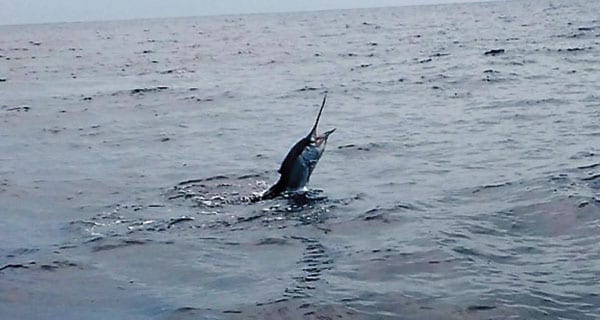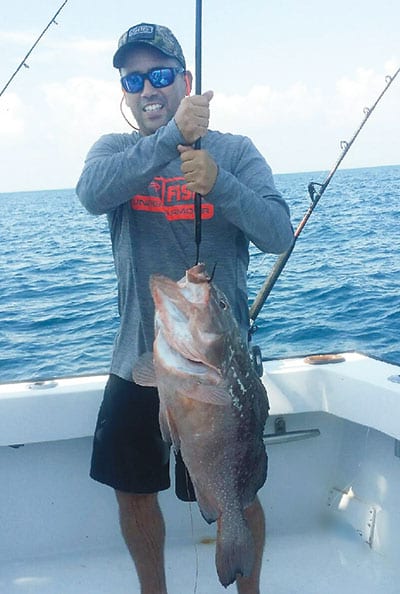
Live bait is absolutely crucial to success this time of year, our trips begin with a quick pit stop on the shallow patch reefs for ballyhoo. With these bait fish congregating in large numbers it usually doesn’t take long to fill the live wells. We’ll start by anchoring on the up current side of the patch and chum, a small mesh chum bag along with a frozen block of fine ground menhaden works best.

This is the time of year where the surface bite starts to move in from far offshore to the waters near the edge of the reef. Slow trolling live ballyhoo on the surface of the water in anywhere from 180ft all the way into 30ft. There’s a large variety of fish eating these ballyhoo blackfin tuna, mahi, kingfish, cero mackerel, sailfish, yellow jack and mutton snapper to name a few.

Fishing on the patch reefs in 10-30 ft of water is starting to pick up again with the water temperature falling, dead shrimp and ballyhoo chunks on a simple knocker rig is deadly. Fishing around these patch reefs is a fun way to get everybody on the boat evolved, its hands on. This time of year is typically windy and there are plenty of areas that are sheltered by larger barrier reefs so it’s a calmer option on the rough days.
The yellowtail bite has been very good in the 65-85 ft range, with plenty of fish in the 1lb-2 ½lb range. Lots of chum is necessary and it never hurts to mix up a bucket of “slop”, these fish will bite in most weather conditions but they tend to shut down when we have a north wind. The grouper however seem to do the exact opposite, the cold snaps seem to kick them into high gear. With the season closing soon get your grouper fix while you can, whether it’s trolling the patches or dropping baits out on the wrecks, there’s plenty of them around.
Capt. Dallas Hopper
Fantastic II Charters “guaranteed fish”
305-451-2890 • www.charterkeylargo.com

